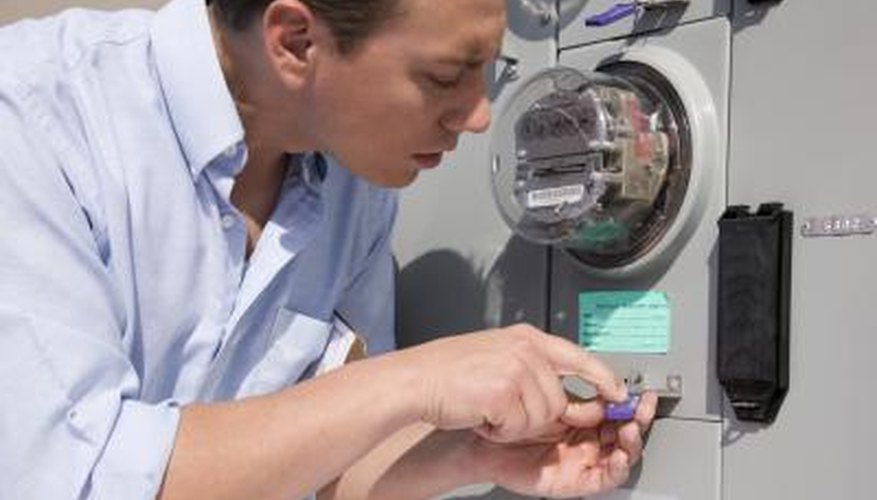A bridge rectifier converts alternating current to direct current. The power loss of a bridge rectifier is a function of its operation. It takes power to operate a bridge rectifier and that power is considered a loss. In electrical terms, power is expressed as watts and is the product of current flow in amps and voltage. In order to calculate the power loss, you must know the current flow through the circuit.
- A bridge rectifier converts alternating current to direct current.
- It takes power to operate a bridge rectifier and that power is considered a loss.
Disconnect the circuit from the power source. Disconnect the positive output leg labelled "+" of the bridge rectifier from the circuit. Connect the "+" lead of the ammeter to the bridge rectifier positive output leg and connect the "-" lead of the ammeter to the circuit where the rectifier "+" leg was previously connected.
Connect the circuit to the power source and turn the circuit on. The ammeter will display the number of amperes the circuit is using. Record this number. Remove the power source and return the circuit to its original state, with the bridge rectifier connected directly to the circuit.
Multiply the current flow recorded on the ammeter by 1.4 volts to obtain watts --- 1.4 volts is the voltage drop across two of the four silicone diodes in the bridge rectifier, 0.7 volts drop for each diode in use. Only two are turned on at any given moment. The current flow in amps through the diodes multiplied by the voltage drop provides the power lost in the bridge rectifier expressed as watts. This power is dissipated mainly as heat and in high-current applications, the bridge rectifier needs a heat sink to function without burning up.
- Connect the circuit to the power source and turn the circuit on.
- Multiply the current flow recorded on the ammeter by 1.4 volts to obtain watts --- 1.4 volts is the voltage drop across two of the four silicone diodes in the bridge rectifier, 0.7 volts drop for each diode in use.
WARNING
Always unplug the power supply before working on any circuit. Large capacitors can hold a dangerous charge for a long time. Dissipate large capacitors through a power resistor.
